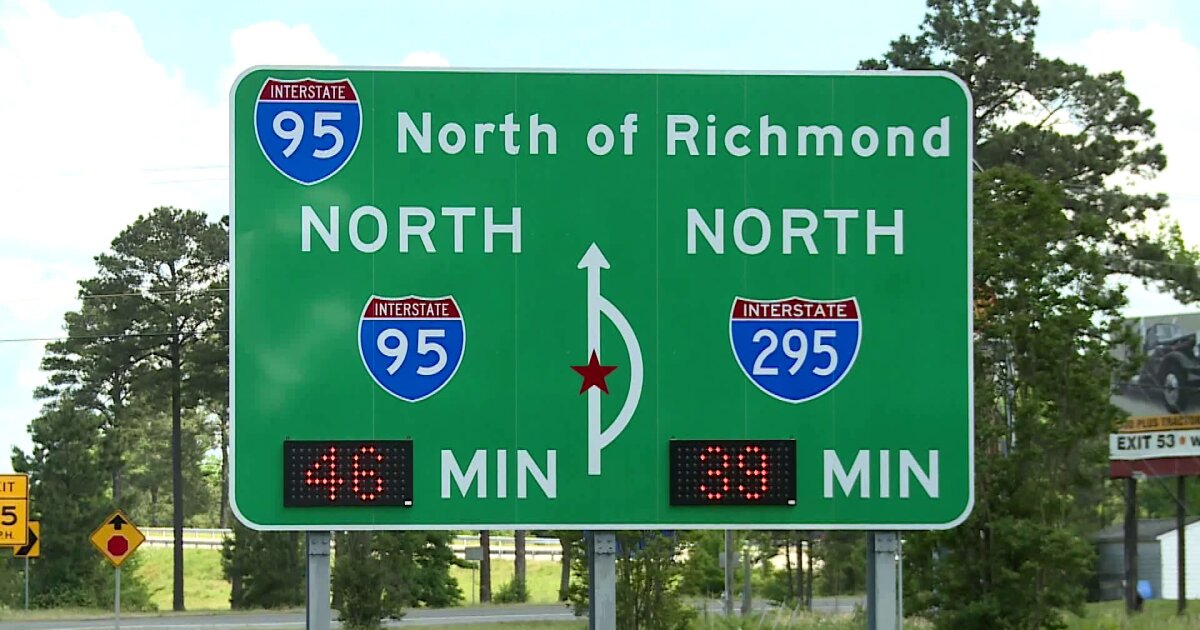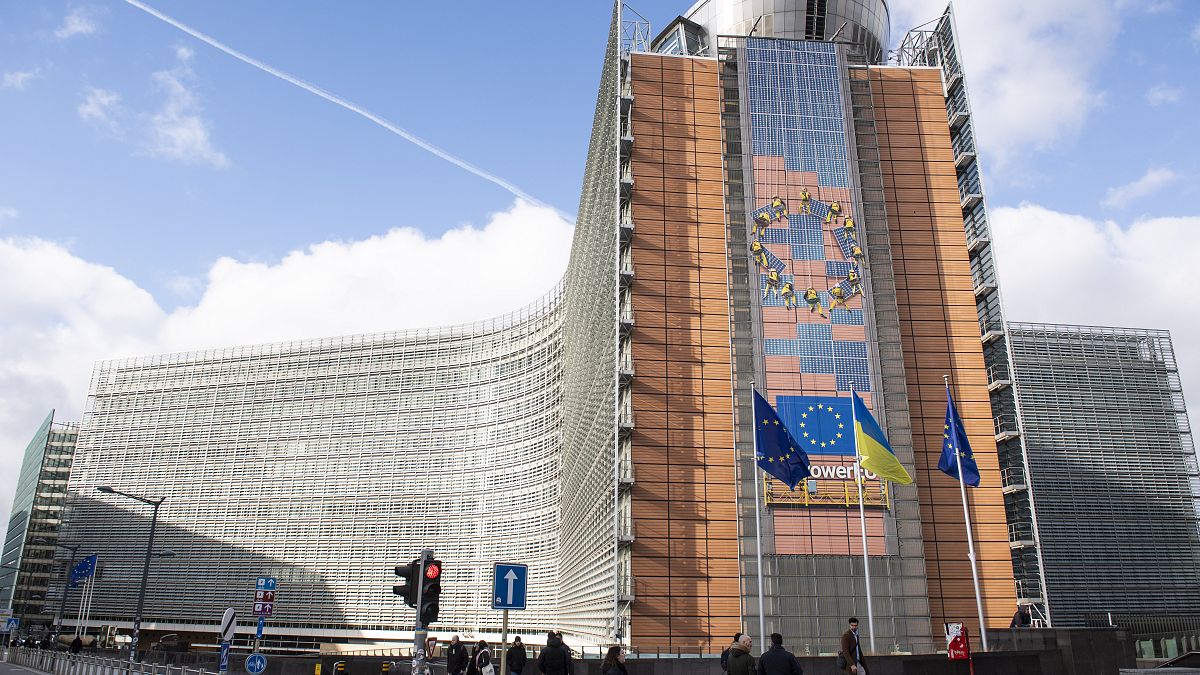On this week’s episode of the Cat-Griz Insider Podcast, 406mtsports.com’s Victor Flores and the Bozeman Daily Chronicle’s Braden Shaw talk about the Montana State football team’s 2024 spring game, MSU’s kicking situation, Tommy Mellott and other Bobcat storylines entering the upcoming season.
Montana
Did Montana Just Enact the Nation’s Most Aggressive Anti-Climate Law? – Inside Climate News

Montana Republican lawmakers have passed legislation that bars state agencies from considering climate change when permitting large projects that require environmental reviews, including coal mines and power plants. Gov. Greg Gianforte signed the bill last week, marking what could be considered the nation’s most aggressive anti-climate law.
Under House Bill 971, Amanda Eggert reports for the Montana Free Press, the Montana Department of Environmental Quality and other state regulators can’t consider greenhouse gas emissions and climate impacts when conducting environmental reviews for large projects. The move builds off a decade-old state law that already banned the state from considering “actual or potential impacts that are regional, national, or global in nature” in such reviews.
The law comes as a Montana judge weighs a case brought by 16 youth plaintiffs who are suing the state government for its pro-fossil fuel energy policies, which they argue violates their right to a “clean and healthful environment” as guaranteed by Montana’s 50-year-old constitution. The hearing for that case is set to begin next month.
Proponents of Montana’s new law, including its sponsor, Rep. Josh Kassmier, argued the legislation was necessary to restore authority over setting policy to state lawmakers after a district judge revoked a permit back in April for a proposed natural gas power plant that state regulators had already approved.
But the measure was met by fierce opposition from environmentalists, who accused the Republican-led Montana Legislature of “hiding its head in the sand” and argued that the majority of Montanans believe in human-caused climate change and want to take meaningful action to address it. A 2022 poll conducted by Colorado College found that nearly 60 percent of Montanans believe in climate change and want to address it, including by transitioning to renewable energy. Of the more than 1,000 comments submitted by local residents on House Bill 971, a whopping 95 percent opposed it.
“Our families are already suffering from an increase in the number of sweltering summer days, longer wildfire and smoke seasons, and historic drought,” Winona Bateman, executive director of Families for a Livable Climate, told the Montana Free Press. “I am not sure how Gov. Gianforte imagines we will do our part to address these growing impacts, or pay for them, if we’re not working to eliminate the root cause.”
Montana’s climate has changed notably over the past century, according to the Environmental Protection Agency, leading to snowpacks melting earlier in the year, more frequent heat waves and increased risk of wildfires. In fact, Montana’s own 2015 climate assessment found that the state’s annual average temperatures have increased between 2 and 3 degrees Fahrenheit from 1950 to 2015, with winter and spring temperatures rising upwards of 3.9 degrees. That report also found that between 1951 and 2010, the state’s average winter precipitation decreased by roughly an inch and the number of days exceeding 90 degrees Fahrenheit in any given year grew by an average of 11.
But despite those impacts, Montana Republicans have fought tirelessly to thwart policies that could threaten the bottom line of coal, oil and gas companies in the state. The Treasure State—a nickname referring to the wealth of minerals found in Montana’s mountains, including coal—has long benefited from a bustling fossil fuel industry. The Bakken formation, one of the largest onshore oil and gas fields in the United States, lies partially in eastern Montana. The state also contains the largest recoverable coal reserves in the U.S., with six coal mines still active and nearly half the state’s electricity coming from coal-burning power plants.
Several GOP state lawmakers also have close ties to the fossil fuel industry. Both Montana Rep. Gary Parry, a member of the House Natural Resources Committee, and recently retired state Sen. Duane Ankney worked for the coal industry before serving in office. U.S. Rep. Ryan Zinke, the Montana Republican who served as Secretary of the Interior under former President Donald Trump, was also a board member of the oil pipeline company QS Energy before he helped facilitate oil and gas development on federal lands for the Trump administration.
Still, the bill that Gov. Greg Gianforte signed into law last week could set a new precedent for anti-climate policy. Not since North Carolina passed its 2012 law, which prohibited government agencies from using anything but historical data on sea level rise when drafting development policy, has a state legislature so aggressively sought to squelch modern climate science. By the time North Carolina’s law passed, opponents had successfully weakened it so that agencies were only banned from considering scientific climate projections for four years. Montana’s law contains no such amendment and extends to all climate-related impacts, not just sea level rise.
Several other red states have introduced or passed legislation that also limits government consideration of climate change, but mostly in public education and investing. Texas passed a law that bars the state from doing business with financial firms that have divested from fossil fuel companies for climate reasons, with state lawmakers now hoping to extend that ban to climate-conscious insurance companies. Nearly two dozen red states have passed or are considering similar actions.
Ohio Republican lawmakers are considering legislation that would force colleges to teach “both sides” of the debate over whether human-made climate change is real, despite the fact that 99.9 percent of scientific literature agrees that burning fossil fuels is accelerating global warming at an unprecedented rate. Tennessee and Louisiana have already passed similar laws.
North Carolina’s law could also conflict with federal policy, including the EPA’s recent draft rule that would require coal-fired power plants, along with some natural gas plants, to use new technologies to capture 90 percent of their carbon emissions by 2038.
In a statement to Montana Free Press, Gianforte spokesperson Kaitlin Price said the new law would allow state agencies to analyze greenhouse gas emissions “if it is required under federal law or if Congress amends the Clean Air Act to include carbon dioxide as a regulated pollutant.” But Congress did just that last year, when it passed the Inflation Reduction Act, which amended the Clean Air Act’s Title VI to include new sections on clean vehicles, greenhouse gas emissions and port pollution.
“There’s a tapestry that is woven throughout the fabric of the Clean Air Act under this legislation that makes it abundantly clear it is EPA’s responsibility to address climate pollution,” Vickie Patton, general counsel at the environmental advocacy nonprofit Environmental Defense Fund, told Bloomberg Law. That includes “greenhouse gases or air pollutants.”
More Top Climate News
Biden Plan Would Open Leases to Conservation, Not Just Drilling and Grazing: A new Biden administration draft rule, first announced back in March, would open up federal lands to leases for both conservation efforts and oil and gas drilling, Matthew Brown reports for the Associated Press. The regulation, like many of Biden’s recent actions regarding federal land development, is drawing criticism from both environmentalists and conservatives. Federal officials say the move puts everyone on equal footing. But what will that mean for Biden’s climate agenda?
Climate Scientists Face ‘Barrage’ of Abuse on Twitter After Musk Takeover: Ever since Elon Musk took over Twitter last year, climate scientists are reporting a dramatic spike in abusive language aimed at them from accounts propagating climate denial claims, Anna Fazackerley reports for the Guardian. “There’s been a massive change,” said Mark Maslin, professor of earth system science at University College London and the author of popular climate books. “I get so much abuse and rude comments now. It’s happening to all of us.”
Pacific Northwest Heat Advisory Impacts 12 Million People: Federal forecasters warned that more than 12 million people living in the Pacific Northwest will be impacted by an early-year heat wave that began over the weekend and is expected to last through at least Tuesday, Olafimihan Oshin reports for The Hill. The National Weather Service warned of “above-normal temperatures” along the West Coast, with daytime temperatures expected to reach 10 to 20 degrees above normal on Tuesday. Four locations in the Seattle region already broke records for high temperatures.
Today’s Indicator
68%
That’s the percentage that deforestation in Brazil’s Amazon rainforest fell in April compared to the same month last year, according to new government data. It’s a big win for the country’s new president, who promised to protect the Amazon, one of the world’s biggest carbon sinks.

Montana
Below normal water supply forecasted for Montana after low-snow winter
Montana’s winter is shaping up to have been among the worst for snowpack in 25 years and, combined with current outlooks, has water forecasters warning that streamflow levels this summer could be well below normal across most of the state.
Early last month, Montana forecasters and water supply specialists said the state would need above-average snow during March and early April, and a wet and cool spring, to keep the meager snow left from melting away too quickly and causing low river and streamflows through the growing season and likely drought.
But according to state and federal reports and presentations released during the past two weeks, the recovery the snowpack made in February and early March tapered off in the weeks since and hasn’t continued to the extent forecasters hoped.
“It’s not likely a full recovery to normal snowpack conditions will occur by May 1 this year across most of Montana,” Montana Snow Survey staff wrote in the April water supply forecast issued by the Natural Resources Conservation Service earlier this month.
“Below normal snowpack conditions on May 1 could be supplemented by above normal spring and summer precipitation, assuming snowpack deficits aren’t too large. Best case scenario would be a return to cooler weather and above normal precipitation for the next months.”
Since 1991, the median day that Montana’s snowpack as a whole reached its peak is April 14, at 18 inches of snow water equivalent, which is the amount of water contained in the snowpack. So far this year, the statewide snowpack peaked at 13.2 inches of snow water equivalent on April 11, three days earlier than normal and nearly 5 inches of snow water equivalent below normal.
The current snowpack of 12 inches of snow water equivalent statewide is just 74% of normal for this time of year, but also in the 7th percentile when compared to 1991-2020. To start the month, one in seven snow monitoring stations in Montana was showing its lowest or second-lowest snowpack on record. More than one-third of them were reporting a snowpack in the 10th percentile or less compared to 1991-2020.
It’s still possible that storms and cooler weather over the next couple of weeks buoy the snowpack at higher elevations and inhibit the melt-off, but this is typically the time of the year the snowpack starts what most people hope will be a gradual decline.
Last year, the snowpack peaked at 18.1 inches of snow water equivalent on April 25, but a quick melt-off ensued because of unseasonably warm temperatures. Two weeks later, the snowpack was at 12.5 inches of snow water equivalent, and it was completely gone by June 21. The median snow-free date is June 28.
As of Monday, the snowpack was gone in the Bear Paw basin. It sat at 45% of median in the Upper Missouri Basin and between 50% and 69% of normal in the Sun-Teton-Marias, Upper Clark Fork, Bitterroot, Smith-Judith-Musselshell, Upper Yellowstone, Gallatin, Lower Clark Fork, and Flathead basins.
The Jefferson (70%), St. Mary and Kootenai (75% respectively), Madison (76%), Tongue (77%), Powder (78%), and Bighorn (85%) basins were all between 70% and 90% of their average snowpack for this time of the year on Monday.
Last week, Dr. Dennis Todey, director of the Midwest Climate Hub for the U.S. Department of Agriculture, said the Upper Missouri River was running at close to its lowest point above Fort Peck in recent decades, which could have ramifications as the river heads east into the Upper Midwest, which just had one of its driest and warmest winters in 100 years.
On the other side of the state, the U.S. Army Corps of Engineers agreed earlier this month to approve a request from the Confederated Salish and Kootenai Tribes’ Energy Keepers, Inc., to raise Flathead Lake’s spring level by two feet to 2,885 feet and hold more water in the lake.
Energy Keepers said it anticipates 2024 will be similar to the record-low flows seen in 2023 that kicked off a political firestorm surrounding the lake’s levels so it started refilling the lake early and believes the lake will be between 2,888 feet and 2,891 feet by the end of May.
“By taking these actions early in the season we increase the likelihood Flathead Lake will reach its maximum elevation in what forecasters are predicting as another dry year,” said Energy Keepers CEO Brian Lipscomb. “Should we experience unforeseen precipitation then we can make further adjustments. By May, we are prepared to make further changes to standard operations depending on weather conditions.”
Most streamflows are forecast to be between 70% and 85% of normal across all of Montana’s river basins, but could be near normal in parts of northwest, southwest, and southern Montana that saw a better snowpack this year.
But rivers including the Bighole, Blackfoot, Little Bighorn, Tongue, Clark Fork, Smith, Sun, and Teton are expected to see streamflows for April through July below 65% of normal, according to the latest forecasts.
Those streamflows will be critical to recreation and especially agricultural production this summer, and the relatively dry winter has led to an overall expansion of drought since the beginning of the year, as the area of the state experiencing moderate and severe drought has more than doubled.
But drought conditions improved in Montana throughout March and into the beginning of April. During the past two weeks, moderate and severe drought has declined in southeastern Montana, and less of east-central Montana is abnormally dry than a week before. But after extreme drought disappeared for a week earlier this month, it has shown back up in northern Flathead County and northwestern Mineral County.
“Extreme drought conditions were introduced in the mountainous region along the Idaho and Montana border due to concerns about low snow amounts and possible early snowmelt,” National Drought Mitigation Center forecasters wrote in last Thursday’s report.
The next two weeks could bring some relief if current forecasts hold. The Climate Prediction Center is forecasting above-average precipitation over the next 6-14 days, including a possible storm this weekend that could bring rain to lower elevations and snow above 5,500 feet, according to the National Weather Service.
But the forecast for early May currently shows above-average temperatures statewide, and the forecast for May through July shows above-average temperatures and below-average precipitation for western Montana, though it also shows equal chances of below- or above-average precipitation and temperatures for eastern Montana for that period.
That will coincide with the El Niño that has persisted through winter ending, and an increasing likelihood that La Niña starts to develop into August, according to the Climate Prediction Center, which typically means cooler and wetter winters in Montana because the jet stream stays further north.
But July through October are currently forecast to bring above-normal temperatures and below-normal precipitation for Montana, according to the Climate Prediction Center. That means the next several weeks will be key in determining how summer shapes up water-wise.
“Given the widespread low forecasts, above normal precipitation over the next couple of months and a slow melt of the snowpack would be most beneficial for the upcoming summer,” the latest water supply forecast says. “Additionally, a wet summer could help to sustain streamflows later in the season.”
This story was initially published by The Daily Montanan, a nonprofit news organization and part of the States News network, covering state issues. Read more at dailymontanan.com.
Montana
Montana Has the 'Most Remote Town' in the Lower 48

Montana encompasses 93 million acres.
We’re the 4th largest state with vast prairies and rugged mountains spread over 147,040 square miles of land. Locals share frustration with newcomers moving to the Treasure State, and despite hordes of out-of-staters moving in, Montana remains sparsely populated in most of the state. For example: Glasgow, MT is named the most remote town in the United States (excluding Alaska).
Read More: Big News for the Legendary Sleeping Buffalo in NE Montana
Glasgow, MT. Screen capture via YouTube – T1D Wanderer
Glasgow, MT, population 3,200 is far away from everything.
Certainly, a handful of unincorporated hovels may be more isolated than Glasgow. Still, regarding a town – with a post office – located farthest from a city of 75,000 or more, Glasgow takes the title as most remote in the United States.
Glasgow, MT. Screen capture via YouTube – T1D Wanderer
It’s about 4.5 hours from Glasgow to the larger cities like Billings, Great Falls, or Minot, ND. If you’ve got your passport, it’s a faster drive from Glasgow to Regina, Saskatchewan at just under 4 hours. TheTravel.com described Glasgow’s location as “rural America’s middle of nowhere.”
Glasgow, MT. Screen capture via YouTube – T1D Wanderer
Get away from it all in Glasgow.
If that’s not their slogan, perhaps it should be. Established as a railroad town, Glasgow’s population boomed during the Cold War construction of Glasgow Air Force Base and the now (mostly) ghost town of nearby St. Marie. The base was decommissioned in 1976.
Read More: This Montana Ghost Town is a Creepy Relic of the Cold War
The city seems to embrace its title of the most remote town. On a city map shared by the Glasgow Chamber, verbiage reads “Welcome to the Middle of Nowhere!”
Glasgow, MT. Screen capture via YouTube – T1D Wanderer
You’re not alone in Glasgow.
Sure, you’re four-and-a-half hours from any airport that can land a commercial jet, but it’s not like Glasgow is completely off-grid. There is a 25-bed hospital for routine medical care, they have an Albertson’s grocery store, hardware stores, a McDonald’s, and great local bars and restaurants, like Montana-famous Eugene’s Pizza.
Eugene’s Pizza, Glasgow, MT. Credit Google/Canva
Visit the roads less traveled in Montana.
For visitors looking for a “real” Montana experience, I’d encourage you to spend some time in places that aren’t Bozeman, Whitefish, Missoula, or Billings.
Check out the small communities around the Hi-Line or eastern Montana if you’d like to see what most of Montana was like 30 years ago. Progress moves slower in isolated places like Glasgow. That’s not necessarily a bad thing.
15 Montana Prairie Ghost Towns
In many cases, little more than a farmhouse remains of these once bustling Montana prairie towns. Here are 15 communities in eastern Montana that are barely more than a ghost town.
Gallery Credit: Michael Foth
How 10 Montana Small Towns Got Their Interesting Names
Miners, railroaders, trappers, and homesteaders all played a part in creating Montana’s most unique town names.
Gallery Credit: Michael Foth
Montana
Cat-Griz Insider Podcast: Evaluating Montana State Bobcats after spring game
-

 World6 days ago
World6 days agoIf not Ursula, then who? Seven in the wings for Commission top job
-

 Politics1 week ago
Politics1 week agoNine questions about the Trump trial, answered
-

 World1 week ago
World1 week agoHungary won't rule out using veto during EU Council presidency
-

 Movie Reviews1 week ago
Movie Reviews1 week agoFilm Review: Season of Terror (1969) by Koji Wakamatsu
-

 World1 week ago
World1 week agoCroatians vote in election pitting the PM against the country’s president
-

 World1 week ago
World1 week agoGroup of EU states should recognise Palestine together, Michel says
-

 Politics6 days ago
Politics6 days agoTrump trial: Jury selection to resume in New York City for 3rd day in former president's trial
-

 World1 week ago
World1 week agoThe Take: How Iran’s attack on Israel unfolded
















